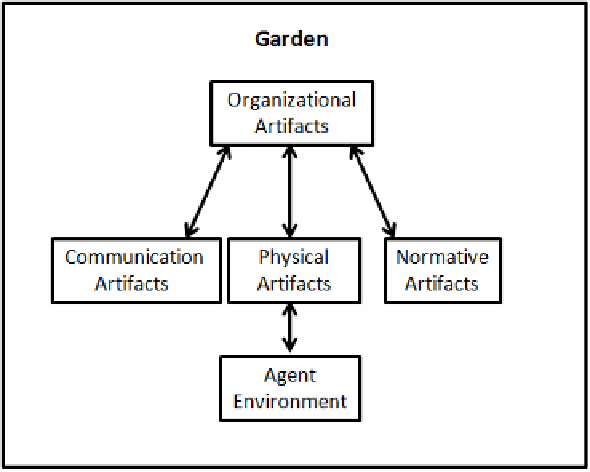Information Technology Reference
In-Depth Information
Fig. 4.
Proposed Architecture: artifacts
The Organizational artifacts make the communication between the roles in the or-
ganization, defined in the MOISE+ model, and among the population of agents. The
Communications Artifacts mediate communication, forwarding messages to their re-
cipients, overseeing its sending order. The Normative Artifacts demonstrate how the
relationships and interactions occur between roles with relation to the norms of the
HSJ. The Physical Artifacts are abstractions over the environment, symbolizing physi-
cal objects and services that agents use to accomplish their tasks.
Therefore, it is intended to apply an approach in the scenario of the HSJ, where the
artifacts are connected to the environment and each role use them to find what is needed
for the simulation of the activities in the the garden.
References
1. Santos, I., Rodrigues, T.F., Dimuro, G.P., Costa, A.C.R., Dimuro, G., De M. Jerez, E.: To-
wards the modeling of the social organization of an experiment of social management of
urban vegetable gardens. In: Lugo, G., Hübner, J. (eds.) Proceedings of the 2011 Workshop
and School of Agent Systems, their Environment and Applications (WESAAC), pp. 98-101.
IEEE, Los Alamitos (2012)
2. Santos, F.C.P., Dimuro, G., Rodrigues, T.F., Adamatti, D.F., Dimuro, G.P., Costa, A.C.R.:
Modelando a organização social de um SMA para simulação dos processos de produção e
gestão social de um ecossistema urbano: o caso da Horta San Jerónimo da cidade de Sevilla,
Espanha. In: Hübner, J.F., Brandão, A.A.F., Silveira, R., Marchi, J. (eds.) Anais do WE-
SAAC 2012 - VI Workshop-Escola de Sistemas de Agentes, seus Ambientes e Aplicações,
Florianópolis, pp. 93-104, UFSC (2012)

